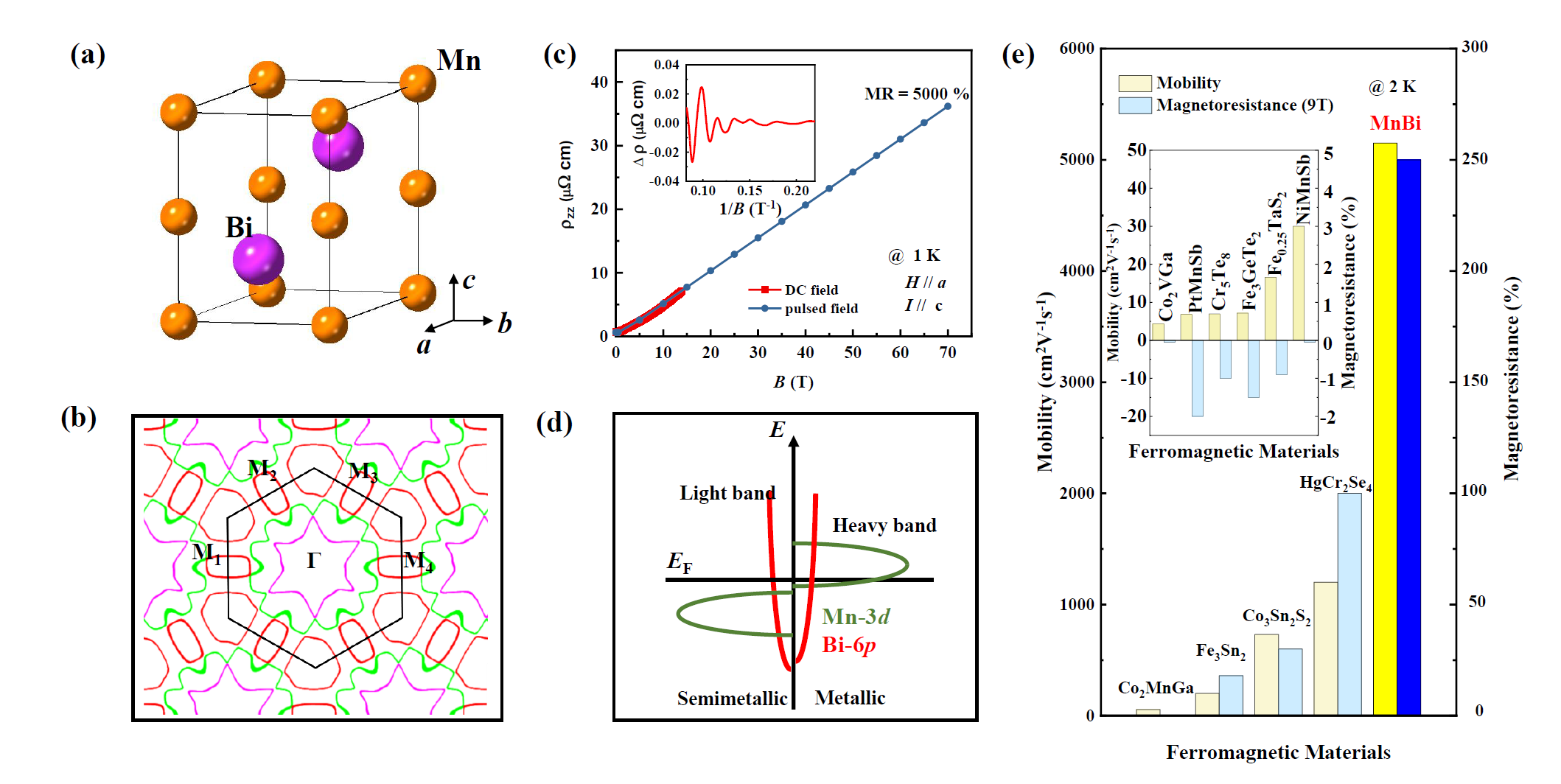Toni Helm, HLD Dresden.
Currently, a group of semimetals excites the physics community due to its intriguing properties derived from massless chiral particles— so-called Weyl fermions. As a consequence of linear band crossings at the Fermi energy and a high Fermi velocity, massless Weyl states can be the origin of a giant, non-saturating transverse magnetoresistance (MR) when exposed to an external magnetic field. In recent years, several groups reported nonmagnetic examples of topological Weyl semimetals, such as TaAs, NbP, and WTe2, which show an enormous positive MR of more than 100,000 percent at low temperatures with a high charge-carrier mobility. However, ferromagnetic compounds rarely display a large MR because of localized electrons with a low Fermi velocity. Nevertheless, scientists from the Max Planck Institute CPfS in Dresden, from USA, from Switzerland, and the HLD found a large, linear positive MR and high chargecarrier mobility in high-quality single crystals of the ferromagnet MnBi (crystal structure and calculated Fermi surfaces are shown in figures 1a and 1b). Our study shows that the MR of MnBi strongly depends on the field orientation and reaches a maximum of 5000 % at 70 T for field aligned along the a axis and perpendicular to the current (figure 1c). Shubnikov-de Haas oscillations with a frequency of only 23 T (inset in figure 1c) indicate a tiny Fermi surface with a light effective mass of the order of 0.4 times the free electron mass. We applied a two-band model to determine the chargecarrier mobilities. The large value of 5000 cm2V-1s-1 at 2 K is almost the same for both, electron- and hole-like charge carriers, and is, thus, the highest mobility reported for ferromagnetic materials to date. The behavior originates from a highly dispersive spin-polarized Bi band with a small effective mass. Figure 1d shows a schematic view of the density of states. Figure 1e provides a comparison of the highest reported mobilities and MR values for ferromagnets. Only a few examples with positive MR exist. The inset showcases selected FMs with the more usual negative MR and low mobilities. This study demonstrates that also ferromagnets with a high Curie temperature can have high mobilities, which potentially is advantageous for the development of future spintronics applications.

Figure: a) Crystal structure of MnBi (NiAs-type). (b) Calculated Fermi surface at kz = 0. (c) Magnetoresistivity. (d) Schematic view of the density of states, showing light semimetallic bands in the spin-up channel and heavy metal bands in the spin-down channel. (e) Highest MR and charge-carrier mobility values for ferromagnetic materials. The inset exemplifies the low mobilities and negative MR for selected ordinary ferromagnetic materials.
Large linear non-saturating magnetoresistance and high mobility in ferromagnetic MnBi, Y. He, J. Gayles, M. Yao, T. Helm, T. Reimann, V. N. Strocov, W. Schnelle, M. Nicklas, Y. Sun, G. H. Fecher, and C. Felser, Nat. Commun. 12, 4576 (2021).
https://www.nature.com/articles/s41467-021-24692-7
Contact: t.helm@hzdr.de






